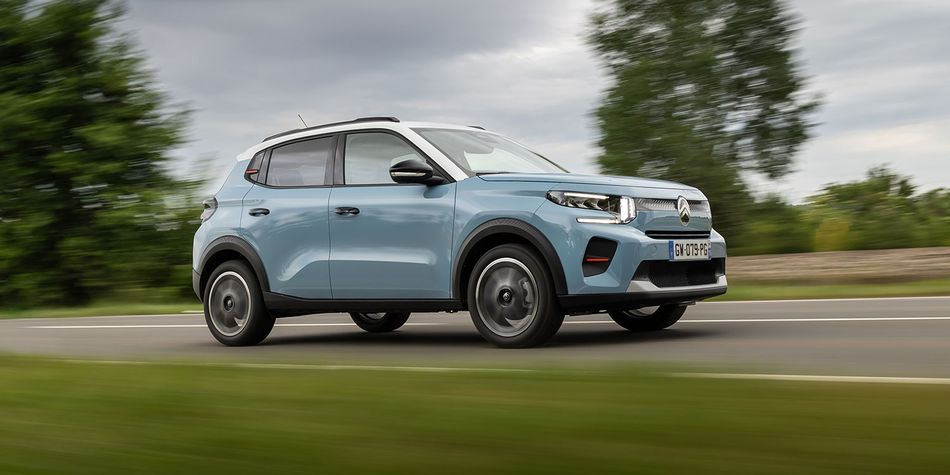Are bigger cars more dangerous in head-on collisions?

Increasingly heavy cars are making head-on collisions more dangerous, and manufacturers need to do more to help, says car safety testing organisation Euro NCAP. It has called on manufacturers to design their cars to protect other road users and not just the car’s passengers.
In its latest report – which includes new safety scores for 16 vehicles including the new Volkswagen Tayron SUV and the Audi Q5 – Euro NCAP puts the blame on ‘car bloat’. It's a trend that has seen the average weight of cars sold in Europe over the past 10 years go up 100kg, thanks to the rise in popularity of larger SUVs and the proliferation of electric cars that use heavy batteries.
Best cars for 2025: whatever size of car you're after, make sure it's a Best Buy
Euro NCAP's 'compatibility' test explained
As part of its head-on collision tests, Euro NCAP measures the forces and damage subjected to both the occupants of the car under test and the artificial vehicle it collides with.
The test is conducted at a combined speed of 62mph, and, in many cases, the artificial vehicle undergoes forces and sustains damage that is beyond what Euro NCAP considers acceptable. Euro NCAP calls this poor ‘compatibility’. Both the Tayron and the Q5 (below) exhibit this trait, it claims.

Euro NCAP added in its statement: ‘In the real world, such vehicles may not absorb their own energy as efficiently as they should and could pose a higher threat to other road users’.
There are examples of cars that do this well, showing that it isn’t just the inevitabilities of physics that makes these larger cars more problematic to collide with. Euro NCAP cited the Mazda CX-60 and CX-80 – both SUVs – and credited Mazda for showing ‘significant effort’ in making the cars absorb collisions in a less severe way.
However, other cars that Euro NCAP cited as showing poor compatibility include the BMW iX, Land Rover Defender and the Polestar 2. These cars received the maximum points penalty in Euro NCAP’s tests for compatibility, while the Alfa Romeo Tonale, BMW 2 Series Coupe and Genesis GV80 have all been penalised, albeit less severely.
None of this means these cars are unsafe; indeed, the majority score five stars overall in Euro NCAP’s test. But the organisation is clear that more should be done.
Richard Schram, the organisation's technical director, said: ‘We know car manufacturers have the capability to design and build frontal structures that can better manage the proportions and mass of the vehicle and the violent change in momentum that comes with an offset head-on collision.’
Latest Euro NCAP test results for May 2025
Vehicle | Euro NCAP rating |
| Audi A5 PHEV | |
| Audi Q5 | |
| Dacia Bigster | |
| Ford Torneo Custom | |
| Ford Torneo Custom EV | |
| Kia EV3 | |
| Kia EV3 (with safety pack) | |
| MG MGS5 EV | |
| Vauxhall Grandland | |
| Peugeot 3008 | |
| Peugeot 5008 | |
| Renault 4 E-Tech electric | |
| Tesla Model 3 | |
| Toyota C-HR PHEV | |
| Voyah Courage | |
| VW Tayron | |
| VW Transporter |
Best cheap cars: top affordable cars from our lab tests
How Which? assesses car safety
Which? helped to found Euro NCAP in the 1990s. We incorporate Euro NCAP test scores into our car reviews and it has a significant impact on the overall score a car receives.
We also conduct our own tests into how cars handle in safety critical situations, including repeating emergency braking tests 10 times for every car, and performing an emergency, high-speed hazard avoidance manoeuvre to assess whether a car can safely return to its lane after avoiding an obstacle in the middle of the road. We also test how easy it is to install child car seats in every passenger seat.
We also pay close attention to the automated safety features on cars, including lane keep assistance and speed sign recognition, and push manufacturers to do better when safety tech isn’t working as well as it should.
To find out more, read our full guide on how we test cars.
Drive smarter and cut costs using our expert advice. Get our Cars newsletter – it's free monthly



